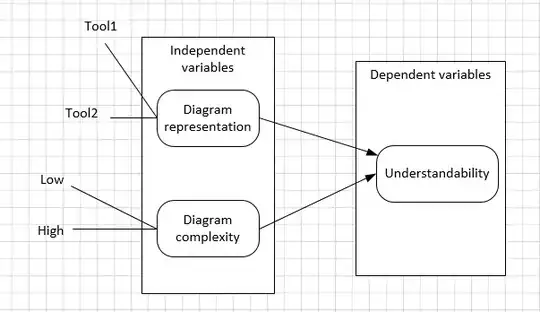This is in relation to the already stated question (Trying to setup an experiment - questions about how the data will be analysed), but is more specialised to address the ANCOVA in general.
I have never done ANCOVA tests in SPSS and from what I've seen in tutorials, the moderator variable is commonly AGE, EXPERIENCE etc. So, variables that are not part of the experiment.
My question is, can a moderating variable be something that is manipulated in the experiment? For example, in the question I've already asked I have the diagram complexity which has two factors, "low" and "high" diagram complexity and participants solve questionnaires regarding BOTH complexity levels.
My question is, can "diagram complexity" be a moderating variable? Is it correct to perform ANCOVA when both factors of the moderating variable are applied to each participant?
UPDATE:
The experiment is designed as follows:
- There are two types of tools (tool1, tool2); there are two types of diagrams (low complexity, high complexity).
- Participants are categorised into two groups: G1 uses tool1, G2 uses tool2. BOTH GROUPS recieve low AND high complexity diagrams.
- Participants solve a questionnaire regarding the diagrams; the order in which they receive diagram is randomised (e.g. some participants get high complexity diagrams and then low, others firstly low and then high; regardless, both groups get both diagrams, low and high).
The idea is to investigate if tool1 is significantly better than tool2, so the dependent variable is understandability. Independent variable is tool-type, which is either tool1 or tool2. What is diagram complexity? Another independent variable? In this case I have 4 groups, 2x2 factorial design.
